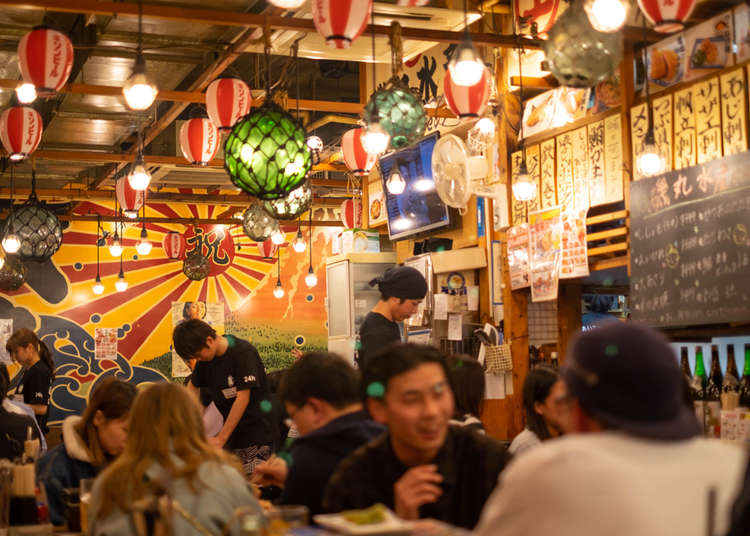
'Japanese People Are Loud!' 10 Things You Didn't Know About Drinking In Japan
- Written by: Joe Turner
Japanese people have a reputation as being reserved, polite and respectful, so you might not realize that Japan is actually a paradise for people who like their alcohol.
Drinking is a way of bringing people closer to share honesty and togetherness. On personal levels, it’s a way to meet new people and strengthen connections. Drinking parties amongst workmates, known as nomikai, are a way of networking and building up rapport with colleagues without having to worry about hierarchical barriers.
Here are 10 things you didn’t know about drinking in Japan.
Main image: Wuttisit Somtui / Shutterstock.com
1. Drinking with bosses is very common
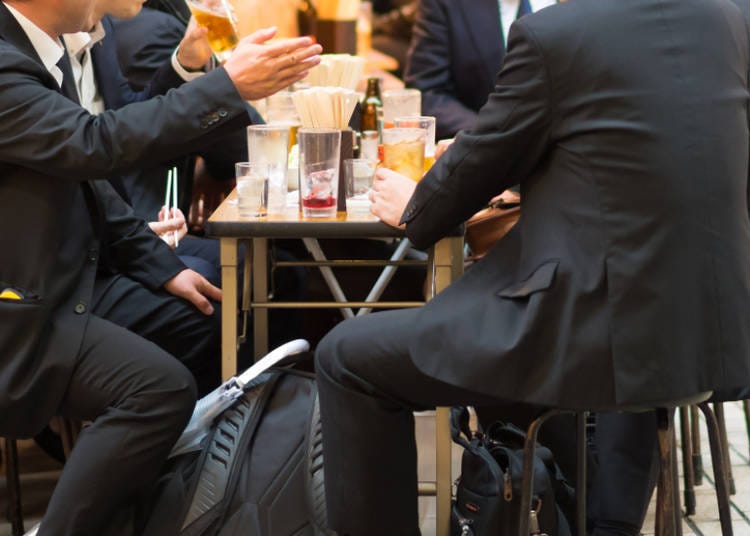
There’s a common saying in Japan. If you want to work your way up the ladder, you need to drink.
Drinking with your colleagues is an essential part of Japanese tradition. It’s quite common for Japanese bosses to invite colleagues out for after-work drinks because it lets people show their true selves outside the confines of the workplace.
Japanese drinking culture is interesting, because in offices, personal talk is usually kept to a minimum, which means that social occasions are the only times people get to know their colleagues on a more intimate level. If you’re coming to Japan on business or trying to land a Japanese client, you’ll most certainly be invited out for a drink or two (or lots more) with them.
Whether you’re an employee or a potential partner, it’s polite to agree when the boss invites you out (some might say that attendance is mandatory), and it shows commitment to your working relationship.
2. Tabehodai offers all-you-can-eat dining
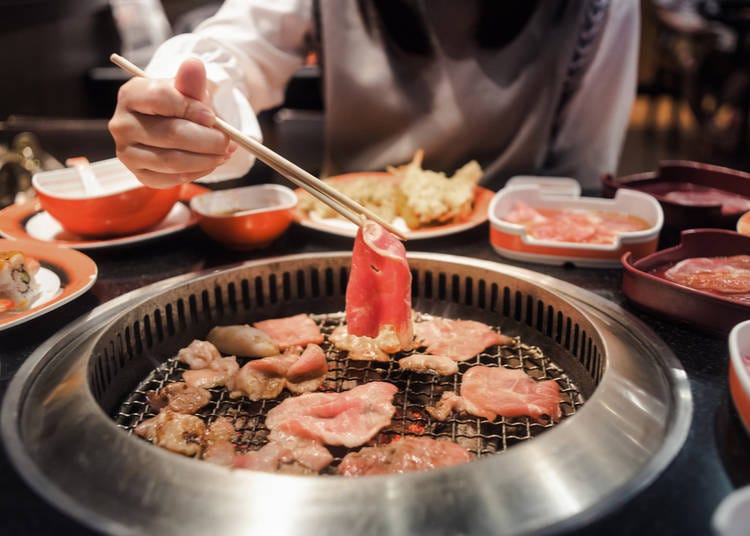
Drinking in Japan can get you feeling pretty hungry, so a restaurant with a tabehodai plan is perfect!
Tabehodai means all-you-can-eat, but unlike standard buffets in the Western world, it comes with a few uniquely-Japanese elements. What makes it different is that instead of collecting your food yourself, you continually choose what you want from the menu and it’s brought to your table. Tabehodai plans are usually for a set period of time, around 90 minutes to 2 hours, during which you can indulge as much as you like.
Furthermore, a lot of normal restaurants and izakayas offer tabehodai plans (the first KFC tabehodai recently opened in Tokyo too!), so they’re perfect if you have a big night of drinking ahead of you. Prices can range from anything between 1000-2000 yen (around $9-$18) to depending on the restaurant and location.
Some tabehodai plans offer specific foods, like grilled meat, yakitori or sushi, and others will offer a wide variety of foods allowing you to sample dishes you otherwise might not. You’ll be left wondering how the Japanese people stay so skinny.
-
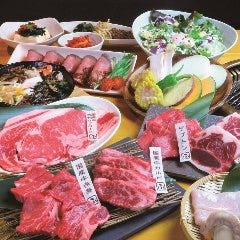 FUFUTEI Ikebukurohigashiguchiekimaeten焼肉 ふうふう亭 池袋東口駅前店
FUFUTEI Ikebukurohigashiguchiekimaeten焼肉 ふうふう亭 池袋東口駅前店-
Address
F.L.C. building 5F,1-22, Minamiikebukuro, Toshima-ku, Tokyo, 171-0022
-
Nearest Station
Ikebukuro Station (JR Shonan Shinjuku Line / JR Yamanote Line / JR Saikyo Line / Tokyo Metro Marunouchi Line / Tokyo Metro Yurakucho Line / Tokyo Metro Fukutoshin Line / Seibu Ikebukuro Line / Tobu Tojo Line)
- Phone Number 03-3986-8926
-
Address
F.L.C. building 5F,1-22, Minamiikebukuro, Toshima-ku, Tokyo, 171-0022
3. Nomihodai offers all-you-can-drink boozing!
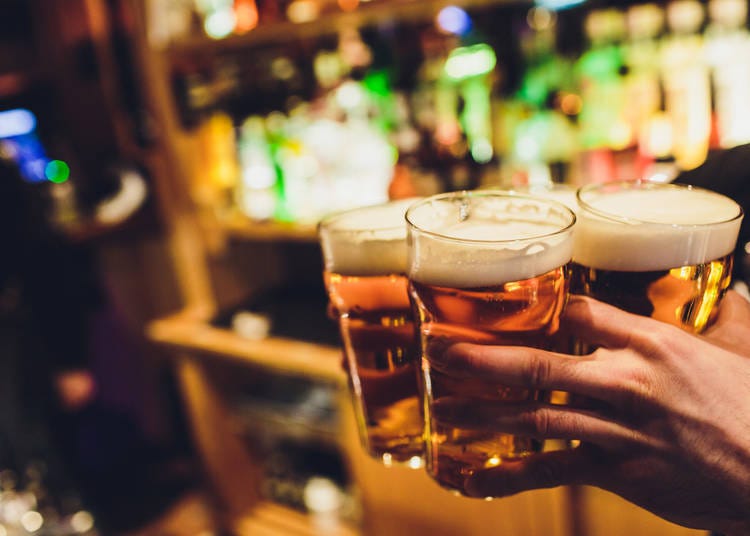
Hodai means ‘all you can’, and nomi means ‘drinking’. Put the two together and you’ve got the holy grail of boozing.
Nomihodai is another phenomenon unique to drinking in Japan. Like tabehodai, nomihodai is an all-you-can-drink option offered by some bars, restaurants, and izakayas, and are much more convenient than constantly hitting the bar to buy rounds for everyone in your group.
Like all-you-can-eat plans, you’re given a set time limit, and you can sample as many different alcoholic drinks as you want. Menus often come in different tiers, meaning you can pay more for access to more expensive drinks. Basic tiers usually offer beer, wine, sake, and a selection of mixers, while higher prices will offer whiskey and harder liquor.
If this wasn’t incentive enough, nomihodai plans can be incredibly cheap! They start around 800 yen and usually peak around 2000 yen (around $7-$18). A bargain deal for anyone looking to have a good time without breaking the bank.
4. Drinking rituals are important
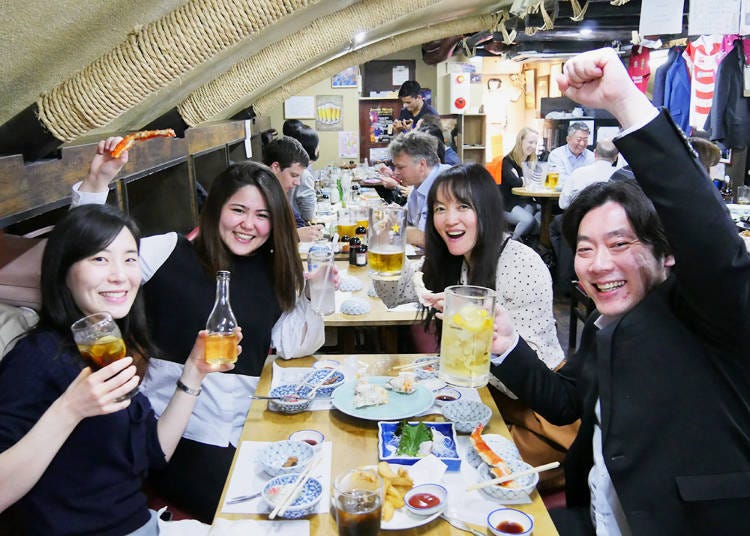
Social drinking in Japan is all about having fun, but since we’re in Japan, don’t forget that tradition still plays an important role!
Drinking rituals usually start with a large beer or sake ordered for the table. The kohai (junior) should then offer to fill the senpai’s (senior) glass. Filling your own cup is usually a no-go. Always wait for someone else to top you up.
Before anyone takes a drink, everyone should raise their glasses and shout kanpai, which is the Japanese equivalent of cheers. It roughly translates to ‘empty cup’, a nod to the Japanese tradition of drinking sake in one gulp. Nowadays, there’s no need to down your drink in one, and just taking a sip after saying kanpai is enough.
Be sure not to drink before everyone has said cheers though, because that can be considered rude!
Another Japanese tradition still present in modern Japanese drinking culture is tejime, which is a form of rhythmic clapping to signal the end of a successful event. Tejime actually breaks down into different types, but the most common one you’ll find at the end of a night of drinking is ippon-jime. This is three sets of three claps, followed by one final clap. This usually signals the end of the night, meaning you’re free to leave at any point afterwards.
5. Bureiko is your chance to speak up!
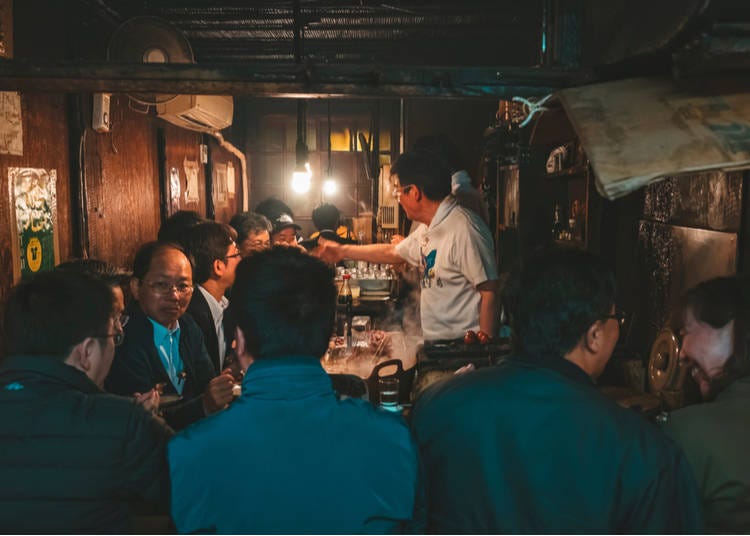
Inside the Japanese workplace, hierarchies and structures are important. It’s rare for the juniors of the business (kohai) to communicate directly with the senpai (the higher-ups), instead the information usually filters down between managers.
However, these rules go out the window during a drinking party (nomikai). When drinks are flowing, it’s considered acceptable in Japanese drinking culture for the kohai and senpai to interact due to the more casual environment. This is what’s known as bureiko, and it’s one of the few occasions where juniors will freely converse with bosses in significantly higher positions.
Bureiko can sometimes extend a little further, with some employees using the casual situation to highlight problems with their workplace or their colleagues. Luckily, employees are usually given a free pass during such situations and all remarks are usually forgotten about by the time the next working day rolls around!
6. Automation is everywhere
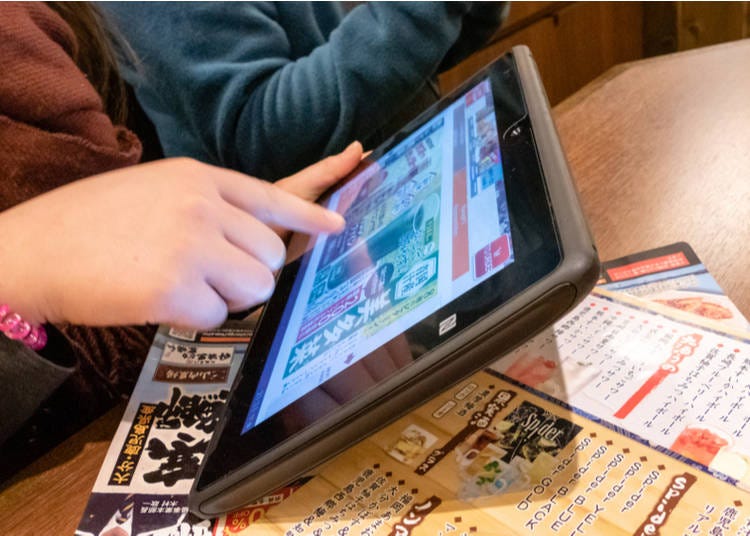
Japan is one of the most technologically advanced countries in the world. The vending machine obsession is well-documented on Live Japan, and you’ll even find hotels and restaurants around Tokyo operated entirely by robots.
When drinking in Japan, a lot of places, especially in touristy areas, offer automated, touch-screen service to order your drinks. There’s usually an English option for non-native speakers and it saves you having to queue up and wait around. Other than this, you'll even sometimes find ticket machines to order your food and drink before you even sit down!
Alcoholic drinks are available through vending machines too, but if you’re under 20, you’ll need an ID card to prove you’re of legal age before you can make a purchase!
7. Different izakayas for different needs
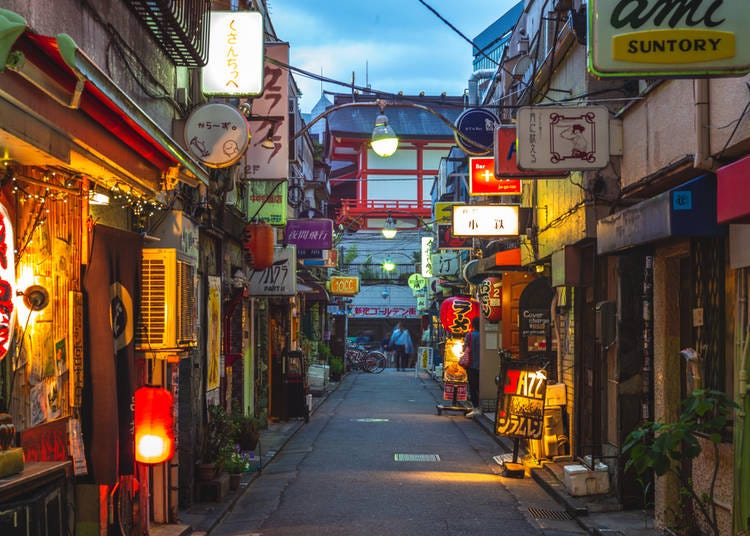
The general image of an izakaya is a packed, smoky bar with a few tables, stools and a chef slicing away behind a grill. However, izakayas actually come in all manner of different shapes and sizes. From standing bars that look like food stalls to Halloween and troll-themed themed pubs.
If you take a stroll through the Shinjuku district of Tokyo, you might stumble upon Tokyo’s worst kept secret. The Golden Gai is a small area, around two blocks, packed with wonderfully-bizarre and different themed izakayas. Some are tiny, seating around five people maximum, and others cater to up to forty or so people.
The confined space inside these small-but-buzzing bars means that you usually end up chatting to whoever might be seated next to you, so they’re a perfect way to meet new people.
If you’re looking for something a little more reserved though, then some of the classier izakayas offer private rooms for small groups. These are sometimes small dining rooms or semi-private compartments away from everyone else, so you can talk a little more relaxed away from the hustle and bustle.
-
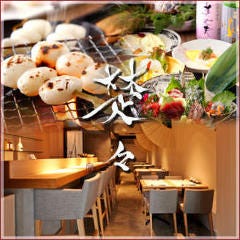 Soso創作和食 代官山 楚々
Soso創作和食 代官山 楚々-
Address
1F,1-34-28, Ebisunishi, Shibuya-ku, Tokyo, 150-0021
-
Nearest Station
Daikan-Yama Station (Tokyu Toyoko Line)
- Phone Number 03-6416-9827
-
Address
1F,1-34-28, Ebisunishi, Shibuya-ku, Tokyo, 150-0021
-
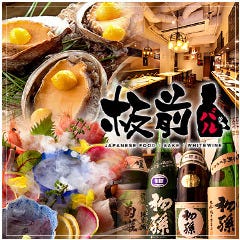 Itamaebar Ginzaten板前バル 銀座店
Itamaebar Ginzaten板前バル 銀座店-
Address
Higashiginza building 1F,3-9-18, Ginza, Chuo-ku, Tokyo, 104-0061
-
Nearest Station
Higashi-Ginza Station (Tokyo Metro Hibiya Line / Toei Asakusa Line)
- Phone Number 03-6264-0850
-
Address
Higashiginza building 1F,3-9-18, Ginza, Chuo-ku, Tokyo, 104-0061
8. Japanese people can be loud!
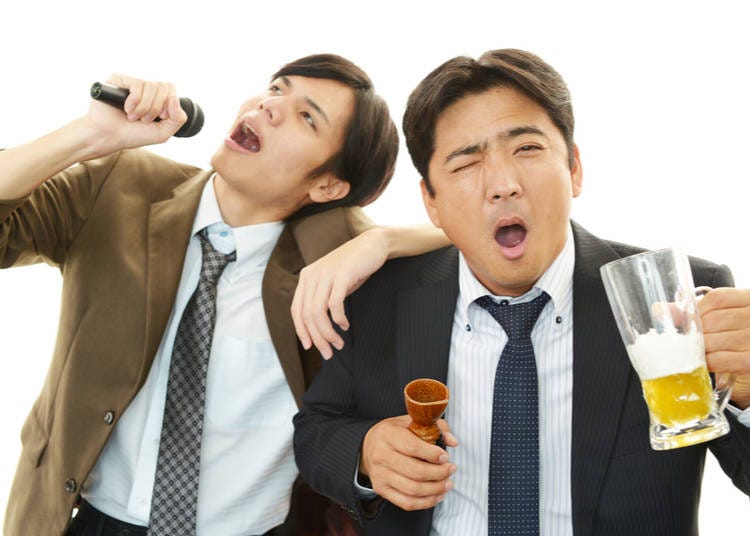
The Japanese have a reputation of being polite, quiet and reserved, but if you’re privy to a night of heavy drinking with Japanese friends, you’ll see a completely different side to them.
Since Japanese culture emphasizes a strong work ethic, with workers often spend long hours at the office, they’ve learned to let their hair down in style. When the pressures of work are lifted, Japanese people will let go and talk, laugh and drink the night away, usually being loud and rowdy in the process. Walk past any karaoke pub on a busy night and you’ll see "salarymen" belting out the tunes while being cheered on by everyone in the bar.
Drinking sessions can sometimes go all night, and it’s not uncommon to see late night drinkers party until they pass out, sometimes falling sleeping on park benches and in cafes.
9. Senpai will often foot the bill
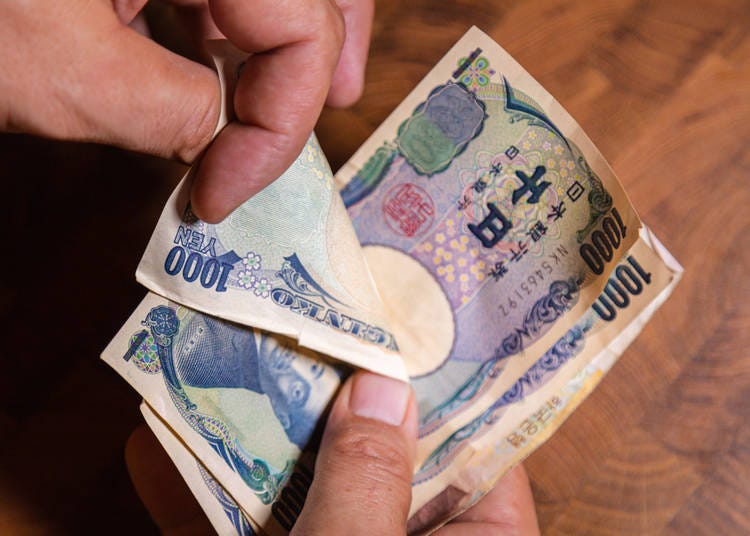
In line with Japan’s emphasis on hierarchy, it’s usually the senpai footing the bill for the food and drink at the end of the night.
This comes from Japan’s custom that seniority is synonymous with length of service in a company. Wages are also usually increased the longer a person stays in the company, and it’s seen as a virtue that the person with the highest wages should pay. In fact, you might see some back and forth between senior colleagues battling to foot the bill!
But with this said, it’s good to at least offer to pay your share. This is seen as a sign of respect and not just assuming someone else will cover for you. In most cases though, the senpai will usually pay before you’ve even had a chance to pull your wallet out. Just be sure to say thank you!
10. You can soak up the different atmospheres

Izakayas are always lively and casual with lots of heavy chatter, but there can be a few differences depending on the type of izakaya you’re at.
For example, a lot of the small, outdoor izakayas will have a different atmosphere depending on the time of the day or the weather. Likewise, these smaller stalls tend to attract small groups of friends or colleagues looking for relaxed conversation rather than heavy drinking.
On the flip side, traditional indoor izakayas are more likely to attract people looking for a good time, so the atmosphere inside these can be much more energetic and noisy. In any izakaya, atmosphere is just as important as the food or drink, and this is highlighted by the menus on offer, the décor and sometimes even the music, so be sure to soak up all the different vibes.
Whether you’re an alcohol lover or not, you’ll find something to enjoy about Japan’s drinking culture. Whether it’s the indulgence, the bonding experiences or the new friends you’ll meet along the way, say kanpai and enjoy!
Joe is a British writer, translator and Japan aficionado. He worked for the Sumitomo Mitsui Group for a number of years and now translates on a freelance basis. When not working, he enjoys researching Japanese history and folklore. Serious tsukune enthusiast. Can be found at @joeturnerbooks on X/Twitter.
- Area
- Category
*Prices and options mentioned are subject to change.
*Unless stated otherwise, all prices include tax.
Popular Tours & Activitiess
Recommended places for you
-

10 Must-Buy Cosmetics at Don Quijote (2025 Edition)
-
Ad

Feeling Unwell While Traveling? HOTEL de DOCTOR 24 is Japan's Sole 24-Hour Online Medical Consultation Service
-
Ad

Just 2 Hours from Tokyo! Enjoy Ibaraki’s Breathtaking Ocean Views, Flowers & Autumn Leaves on Private Tours
-

Autumn in Japan 2025: Fall Foliage Forecast & Where to Enjoy the Colorful Leaves (+Tour Info)
-

A Don Quijote Like No Other: Step Inside the All-New Tourist-Friendly Store at Shinjuku Tonanguchi Bekkan
by: Chehui Peh
-

(12% OFF KKday Coupon) Mt. Fuji Autumn Leaves, Powder Snow & More! 15 Best Tours to Experience Japan in Fall & Winter
Inspiration for Accommodations
-

Enjoy Mt. Fuji from the Comfort of Your Room! Recommended Ryokan with Mt. Fuji View
-

Stay Near the Cherry Blossoms! Hotels for Cherry Blossom Viewing in Tokyo
-

Family-Friendly Hotels with Free Shuttle to Disneyland: Convenient Access for a Magical Stay
-

Top Ranked Hakone Hotels with Mt. Fuji View: Enjoy Stunning Scenery from Your Private Space
-

Convenient Tokyo Hotels with Airport Shuttle: Ideal for Families and Heavy Luggage
-

Stunning Tokyo Tower View Hotels: Enjoy Spectacular Scenery from Your Private Space
-

Convenient Asakusa Hotels with Kitchens: Ideal for Extended Family Visits
-

Experience Luxury: Hakone's 10 Best Five-Star Accommodations
-

Enjoy Mt. Fuji Autumn Leaves! Top Hotels Near the Popular Autumn Leaves Corridor
-

Experience Hakone Fall Foliage from Your Room with Stunning Views
-

(Video) Walking Tour along Narita Omotesando - Quaint Historical Village near Narita Airport!
by: Victor Gonzalez
-

6 Surprisingly Cheap Things in Japan
-

Discovering the Back Alleys of Tokyo's Arakicho and its Top Three Gourmet Hotspots
-

Easy Japanese Recipes! How to Make Omu-Soba, Yakisoba with an Omelet! (Episode 11) #IzakayaNobu
-

Easy Japanese Recipes: Japanese-Style Mackerel & Shrimp Bouillabaisse!
-

Izakaya Shoya: Feasting and Drinking in the Japanese Pub Wonderland of Ueno
- #best ramen tokyo
- #what to buy in ameyoko
- #what to bring to japan
- #new years in tokyo
- #best izakaya shinjuku
- #things to do tokyo
- #japanese nail trends
- #what to do in odaiba
- #onsen tattoo friendly tokyo
- #daiso
- #best sushi ginza
- #japanese convenience store snacks
- #best yakiniku shibuya
- #japanese fashion culture
- #best japanese soft drinks



















